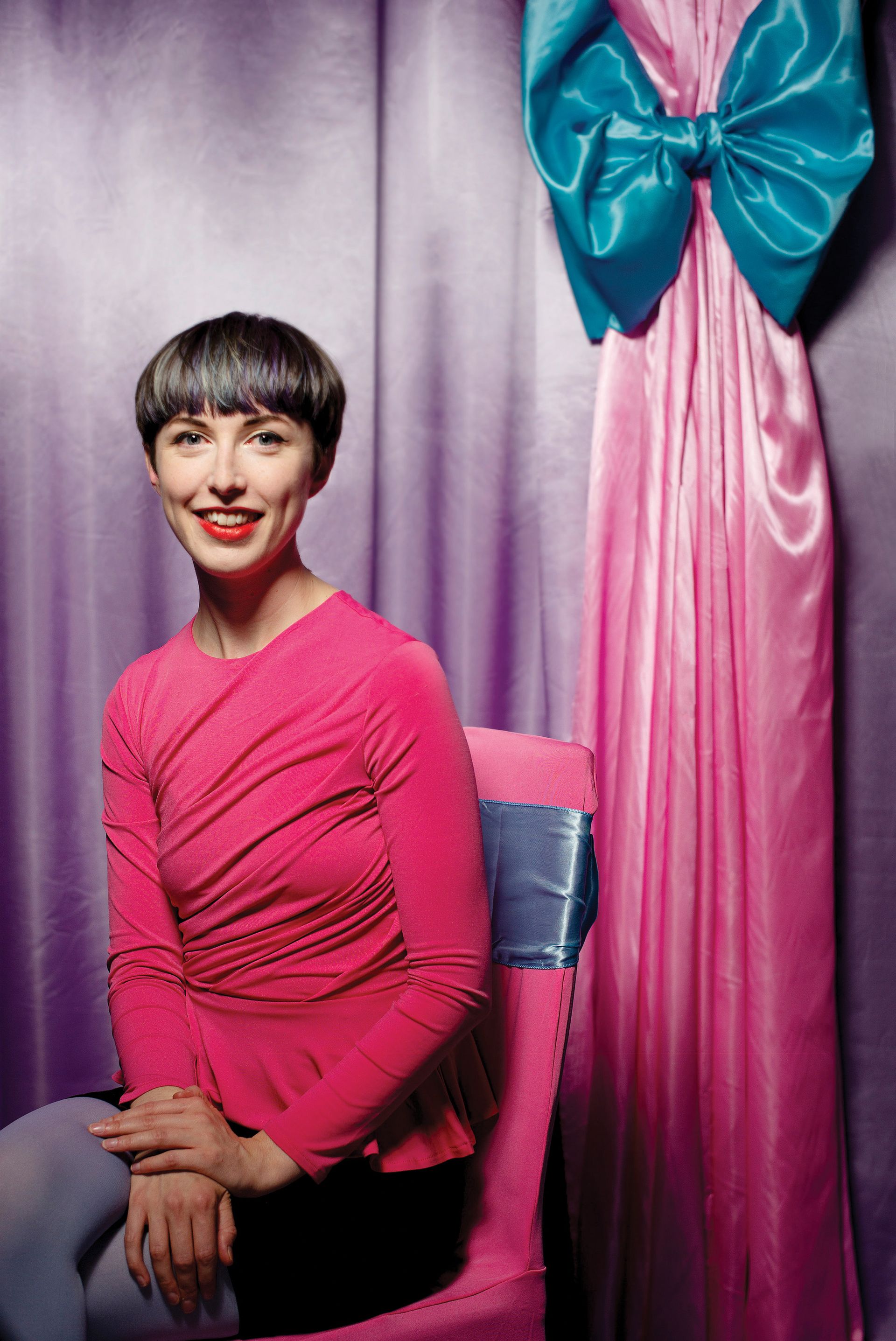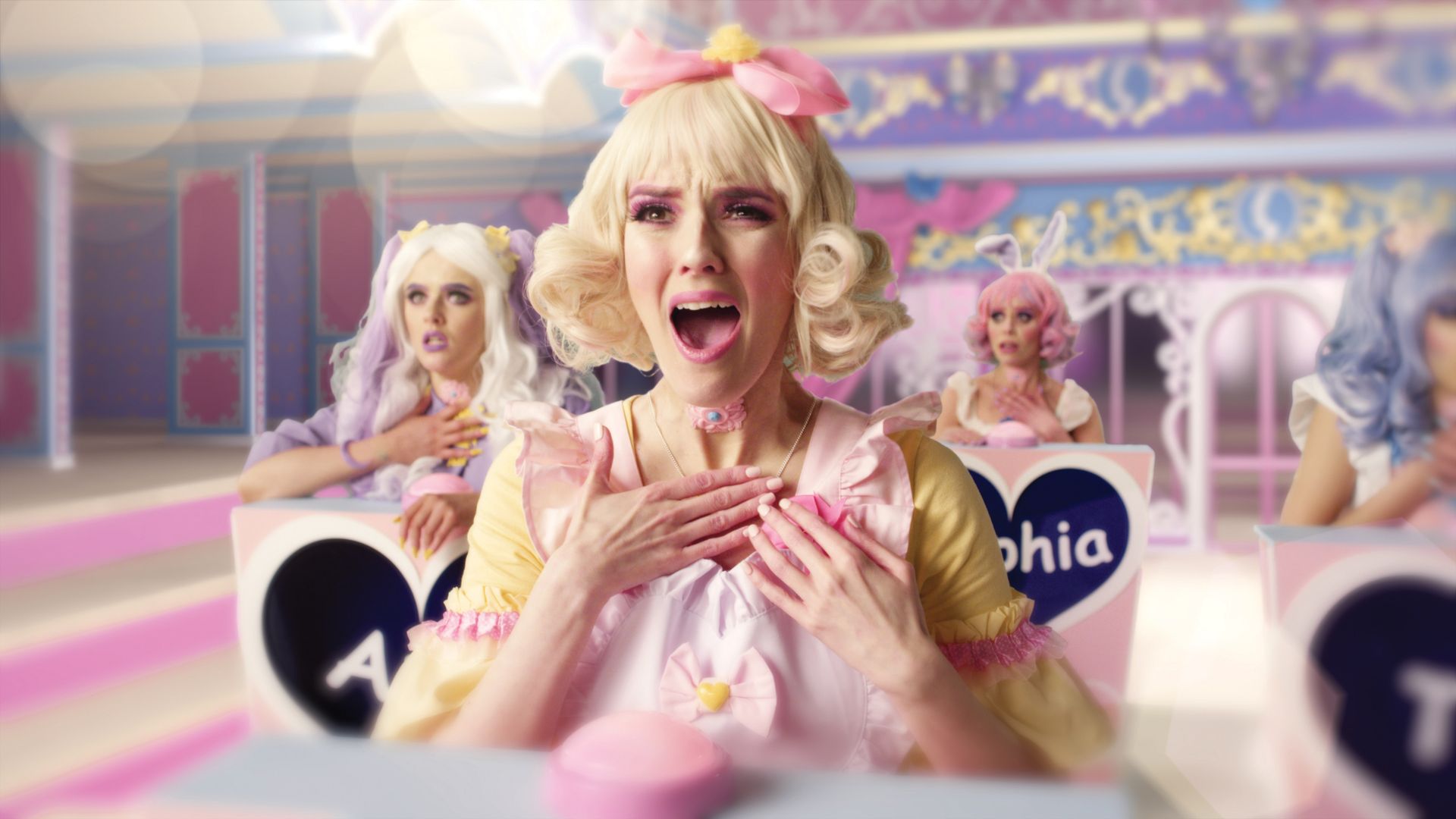Rachel Maclean’s film Spite Your Face (2017), a twisted retelling of the Pinocchio tale for the Trump age, was one of the most anticipated works of the 2017 Venice Biennale. Now it is on show at the Zabludowicz Collection as part of the artist’s first major solo exhibition in London. Also on display is a version of her new film Make Me Up (2018) and a new virtual reality (VR) work, I’m Terribly Sorry (2018).
All three pieces present elaborate and engrossing imagined worlds, populated by characters both enticing and grotesque—many of them played by the artist herself—and explore the dark underpinnings of our contemporary politics and culture through satire, humour and horror. Maclean only finished art school in Edinburgh nine years ago, but has already crafted a distinctive visual language that draws on sources ranging from Old Master paintings to advertising, reality television and YouTube culture.
The Art Newspaper: Spite Your Face seems to refer directly to President Donald Trump and the era of fake news, while Make Me Up satirises YouTube culture, among other things. Your films are anchored to real political events and cultural trends and deal with difficult issues.
Rachel Maclean: Yes, absolutely. I made Spite Your Face very purposefully in response to Brexit and Trump. I want to make art as an investigation of things I’m thinking through and it’s a politically confusing and turbulent moment. I like art that hits on something that is difficult to swallow or to think about and also difficult to be confronted with.

Rachel Maclean is presenting a new VR work in north London this week Photo: David Bebber. Courtesy the artist and Zabludowicz Collection
Do you think your chosen visual language, the cutesy cotton-candy aesthetic, helps us to deal with the darkness of the themes you explore?
Yes. So much of our existence in this moment of late capitalism, dominated by powerful companies like Google, is about the surface of things. When we go online, for example, we’re presented with infantilised, cartoony images that are a cover for all that is going on underneath. You’re meant to be distracted by these images and not delve deeper and just say: ‘Oh, that’s cute, Google have done an animation on their home page.’ So, I want to comment on that but also to create a world that is aesthetically seductive and that you can be immersed in and believe in and then I want there to be these moments where that ruptures and what you see is difficult or grotesque. Hopefully that happens when you’re already sucked into the film. If you just throw something shocking or difficult at an audience immediately, they’re just going to say: ‘Oh no, I’m not even going to engage with this.’
There’s also a very strong feminist narrative in Make Me Up.
I was interested in thinking about feminism from different perspectives. A lot of it has to do with the male gaze and how it is worked into culture, so in the film you see little security cameras which monitor women and their levels of beauty. And you see the main character, Siri, break the system or avoid the cameras’ gaze by using make up to draw double eyes on her face. I like the idea that she breaks out of this feminine world not by removing make up and these signifiers of femininity, [but instead] she uses them as a way out.
The character you play in the film speaks entirely with the voice of Kenneth Clark from his television series Civilisations. Why?
The initial commission was to respond to Clark and Civilisations and then it changed as I was making the film, but I got quite attached to his voice. I like it when a voice just places somebody very specifically in a historical moment and Clark’s voice speaks of white male authority of a certain class. And his turn of phrase is amazing.

A still of Maclean’s new film Make Me Up (2018), a version of which will be shown on BBC4 next month Courtesy of the artist; produced by Hopscotch Films with NVA for the BBC; Creative Scotland and 14-18 NOW: WW1 Centenary Art Commissions; supported by Jerwood Charitable Foundation. Make Me Up is part of Represent; a series of works inspired by the Representation of the Peoples Act 1918
The show also includes your first virtual reality work. It seems like the perfect medium for you because the environments you place your films in are already so immersive.
I was really excited about it; I’ve been wanting to do VR for a while. It’s taken time to think it through as a medium because it is so different to film, having to think about the viewer being an active participant in the story. When you make films, so much of your work is about framing what the viewer gets to see. With VR, the viewer has the choice of looking in any direction, which is very challenging for a film-maker. And I wanted to make something where viewers have to think about their complicity in the narrative.
The level of detail in the landscape sets it apart from other artists’ VR projects, where usually there is one thing happening and the rest of the environment is generic.
I wanted to make a work that places you in a specific world and makes you feel what it’s like to be in that location. That is what is quite powerful about VR. In horror films, for example, it takes a lot of set-up, a lot of tension and music, for people to be scared. You can’t just immediately scare someone. But with VR, you can just dump people into an environment and they immediately feel as if they are there. And having people coming towards you is scary. The immediacy of your emotional reaction makes it totally different from film.
And the setting is a dystopian post-Brexit landscape?
I wanted to allude to Brexit without specific political reference. The work presents an idea of Britishness reduced to tourist tat. I’ve always been interested in national identity, but it is a very complex thing to unpick Britishness. I don’t think we are necessarily taught our own history; if we understood how much we have influenced the world and how much our culture is influenced by it, then we would have slightly more humility in our response to those who want to connect to other nations and be part of something larger. There is still this very stubborn hangover of empire—the sense that we are a small nation that can punch above its weight and go it alone, and that our culture is ultimately superior to everyone else’s.
• Rachel Maclean, Zabludowicz Collection, London, until 16 December


